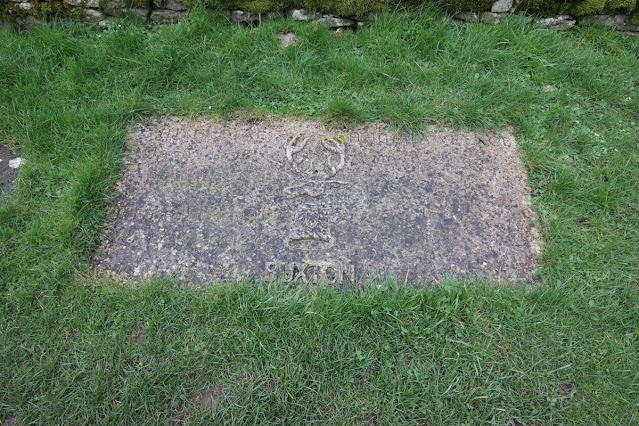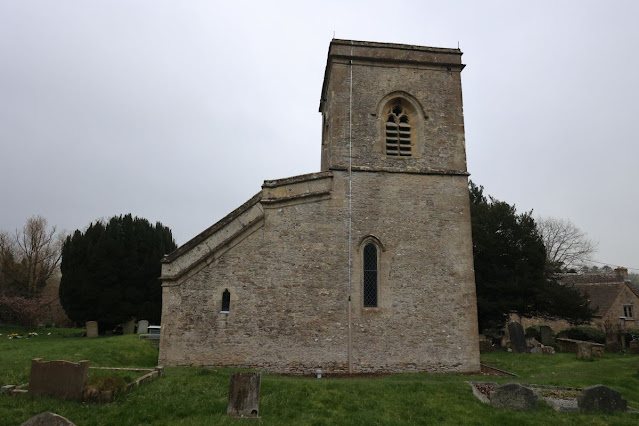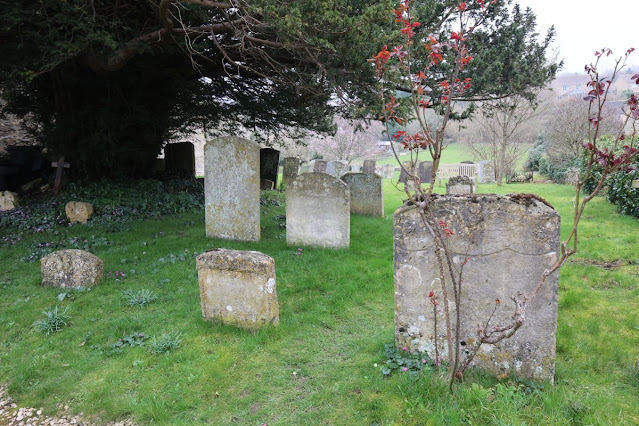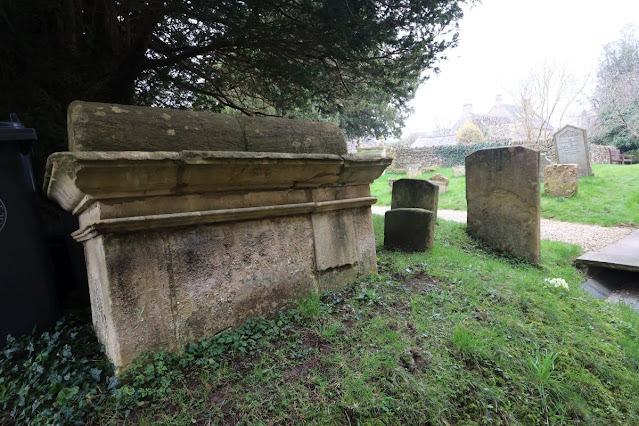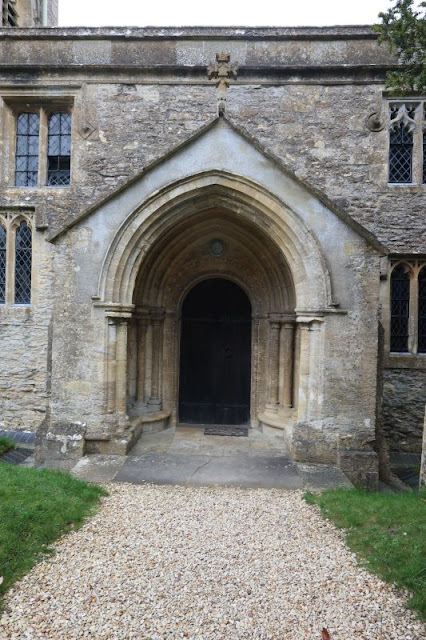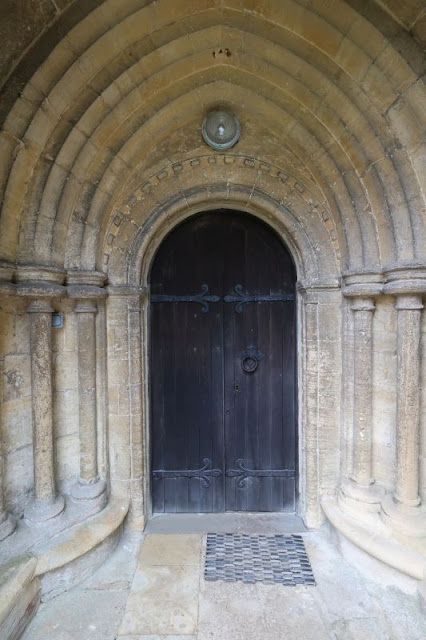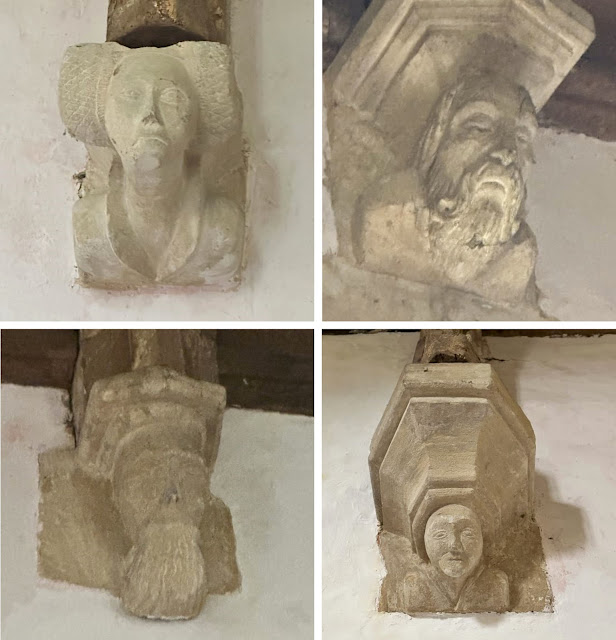After visiting Fullbrook then Burford churches I stopped off at St Oswold Widford which is not far from Burford and stands own on a hill above the River Windrush the old Medieval village it served is no more and only a few houses that comprises the village are about a Kilometer away
"Early occupation is evidenced by the remains of a Roman villa. The Church of England parish church of St. Oswald stands on its site, and a small area of Roman mosaic was visible in its chancel, but has been moved to Cirencester museum. The Domesday Book of 1086 recorded that St Oswald's Priory in Gloucester held the manor of Widford. It was a detached part of Gloucestershire until the 19th century. St Oswald's church in Widford is Early English Gothic and was built in the 13th century. In the 14th century numerous wall paintings were added, remains of which survive. Most of the church's present windows were added in the 16th and 17th centuries.
Widford was a substantial village in the Middle Ages but today only the 16th-century manor house and a few other houses remain. St. Oswald's stands in a field whose cropmarks show the outlines of former buildings. In 1844 the Counties (Detached Parts) Act 1844 transferred Widford to Oxfordshire. Widford was a civil parish from 1866, but by 1931 its population was only 29. In 1932 the civil parish was merged with the parish of Swinbrook to form the civil parish of Swinbrook and Widford.
The historian, priest and former Rector of Lincoln College, Oxford, Vivian H. H. Green, is buried in the churchyard."
Going past it along the wall looking north east
South west end
North west end
The east end and window
North side of the church
Blocked north door
North west view with the churchyard
Near the entrance this grave with coat of arms and the name Buxton on it
Nearby is this tomb
Along the south side of the church
A few of the headstones are newer than the graves behind
Up in the north east corner of the churchyard this bench
Commemorating the coronation of King Charles III
Inside is a bit like going back in time
With a small chancel arch
Simple chancel
The altar just a table with a cross beneath a plain east window
The altar table and cross
Looking back though the chancel arch
Either side of the east window what looks like wall painting and the outline of the statues that would have been on the corbels
Various recesses in the church
The pulpit and steps
This box pew as most likely for the clerk and is used for a lectern
Steps leading to the pulpit
Looking form the lectern
The original box pews
Inside a box pew
Book shelf with hymn books on it
another box pew though I'm not sure what is under the cloth
The floor is covered in flagstones and a couple like this one look like tombs
The one memorial in the church to John Secker and his wife Elizabeth
Lancet window
There are Medieval wall paintings in the church this one the biggest you can make out
This is the other one
The tub font one of the oldest parts
I will leave you with this close up of the Coronation coat of arms on the bench.
Till next time I wish you al a peaceful week









